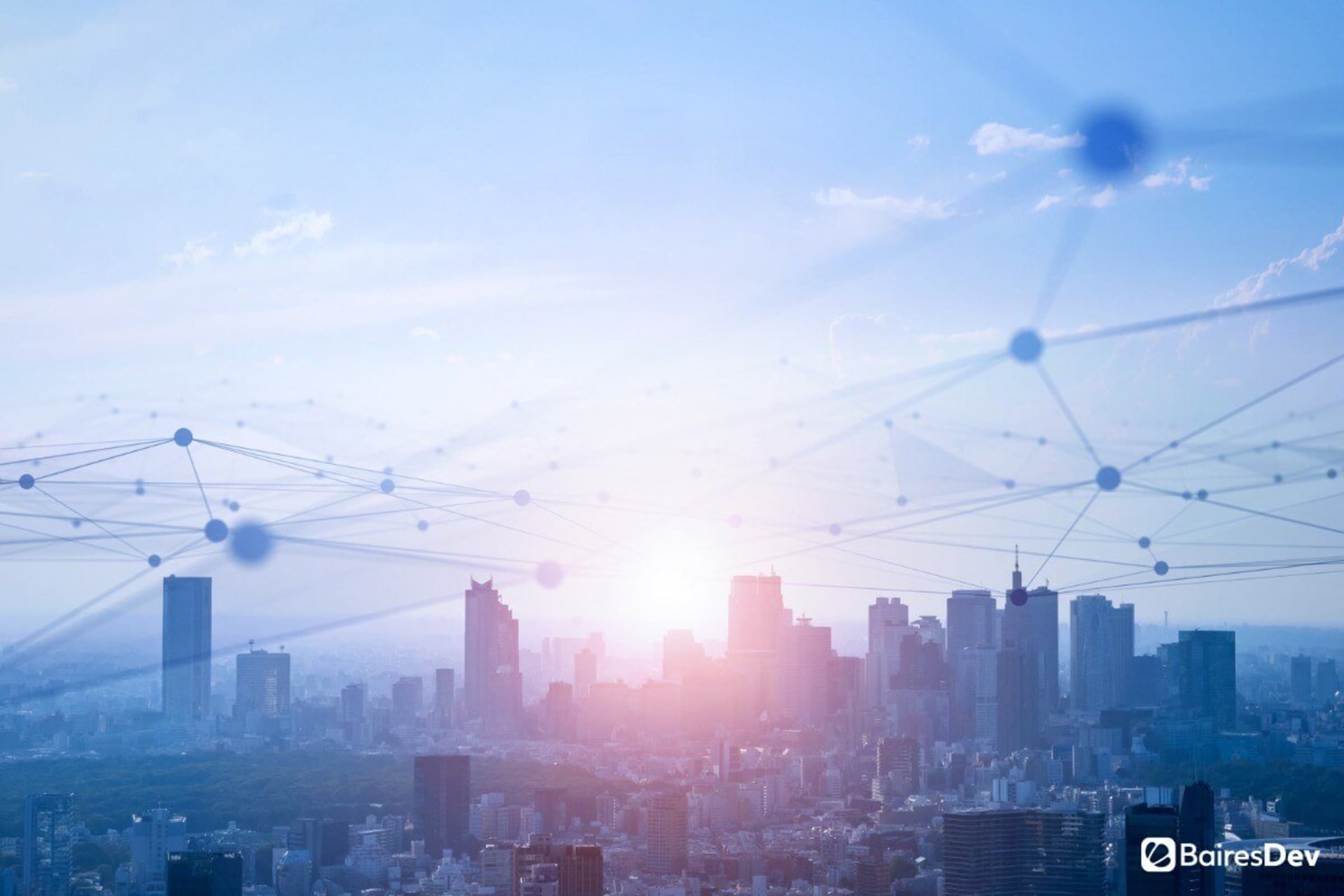There are over 10 billion active Internet of Things (IoT) devices worldwide in 2021. This vast network of interconnected smart devices leverages an internet connection to power a variety of tools, often remotely, from thermostats and slow cookers to security systems to entire systems.
Since 1999, when Kevin Ashton first described the term, the IoT has become more than a reality — it has grown into an empire. Many of us use it every day, not even realizing that we’re tapping into its power. According to Statista, IoT spending is projected to reach 1.1 trillion USD by 2024.
Already, the IoT has become a global phenomenon but it still has a lot of room to grow. What’s next for this pivotal innovation? Here are 5 predictions for 2024.
1. Enhanced Security
The IoT generates an enormous amount of data every day. While this is an asset to companies looking to improve their services and reach a wider market, it’s also somewhat of an Achilles heel. Hackers looking to exploit security gaps can also access this data and use it against you and your consumers.
From infrequent updates to unprotected information, there are a number of ways cybercriminals can attempt to breach IoT devices and systems. That’s why businesses and developers will make security an even greater priority in 2025. Given how common these cybercrimes have become — and will continue to grow in the coming year — businesses in the IoT game will use new solutions to protect themselves and their consumers.
For example, they will be more likely to employ network managers and operators to govern this web of connected devices. They will also turn to specialists, including white-hat or ethical hackers, to help them spot and patch vulnerabilities.
In order to ease the concerns of consumers, businesses will highlight their efforts when marketing and promoting their IoT products, ensuring that people have more faith in their devices.
2. Wider Applications Across Industries
Already, the IoT is affecting numerous industries. In the coming year, it will become a focal tool in some areas and break into others.
Manufacturing
The IoT has numerous applications in the manufacturing industry. For example, it can predict maintenance needed before machinery breaks down using sensors. It can also provide an abundance of data on worker performance, helping companies improve productivity and increase output.
Wearable technology, meanwhile, can keep leaders and employees informed about safety and other conditions within factories.
Healthcare
The healthcare industry, too, is ripe for IoT innovation. Wearable technology has become a staple, tracking different facets of people’s health like heart rate and blood pressure. Smart sensors can also be used to adjust light and temperature to meet the needs of individual patients. And telehealth innovations can help assess patient conditions remotely.
Education
E-learning has been booming for decades. Now, thanks to innovations like augmented reality (AR) and virtual reality (VR), the IoT is taking it to the next level. Through these technologies, powered by the IoT, students can be “immersed” in historical and scientific scenarios, for example.
3. Greater Use of Analytics
The IoT generates huge amounts of data. Now, increasingly, businesses are leveraging that information to make better decisions.
Integrated analytics empowers businesses to apply insights they’ve gleaned from data gathered from IoT usage to make them a key part of their choices. They can also fuse these insights with information from other data sources. Using these important tools, leaders can speed up and revitalize data analysis.
This will also help improve performance, supporting IoT networks and devices, and enabling businesses to devise better algorithms.
4. Smart City Growth
Smart cities seem like the stuff of the future. Singapore, Helsinki, and Zurich topped the list of smart cities in 2020, but we’re bound to see others around the world join the list in 2024.
Smart cities are urban areas that rely on innovations (largely the IoT) to generate and collect data about how the location functions, using sensors and other devices to reduce costs, improve the environmental impact, and connect a range of equipment and devices. The infrastructure is meant to enhance the way the city runs and the lives of its citizens.
In 2018, spending on smart city initiatives was around 81 billion USD, according to Statista. In 2024, it’s projected to hit 189.5 billion. We will certainly see smart cities soar in the coming year.
5. Attention to Sustainability
Increasingly, the world has been focused on sustainability efforts to make our planet greener, reducing waste and carbon footprints.
Technology is often blamed for increasing our carbon footprint. But the IoT can actually help sustainability efforts. Sensors on devices, for example, can assess carbon consumption in various devices and tools — cars, thermostats, and so on — helping people and businesses understand their habits and take strides to correct them. Devices like smart lights can be programmed to turn off at certain times, saving energy.
On a small scale, this probably doesn’t sound like much. But this isn’t just a local operation — it’s a global movement. We will see more and more people and businesses adopting smart devices to better curb their energy consumption and waste in 2024, and we will also see innovations that allow people to make better, more environmentally friendly decisions.
The Future of the IoT
The IoT is a powerful entity, connecting people and objects, reducing costs, improving efficiency, and far more. Already, it has allowed us to achieve what we once believed was impossible. And it’s showing no signs of slowing down.
The IoT is still evolving, of course, and there are new advancements every day. Along with the innovations we have discussed, new topics to consider include edge computing, which means that data is being processed and analyzed closer to the source, which ultimately reduces the amount of information that is transmitted. This leads to reduced latency and quicker response times.
Artificial intelligence (AI) and machine learning (ML) are also important concepts to think about, especially as these entities grow in use and relevance. AL/ML algorithms will need to make sense of the vast amounts of data being generated to better inform decision-making.
And there are security and privacy issues we will need to grapple with as well. As new technologies and devices emerge, we will have to create and implement protocols to ensure the safety of our systems.
This list is by no means exhaustive. In 2025, we will almost certainly see this stuff of the future accomplish things beyond our wildest imagination.
If you enjoyed this, be sure to check out our other IoT articles.







